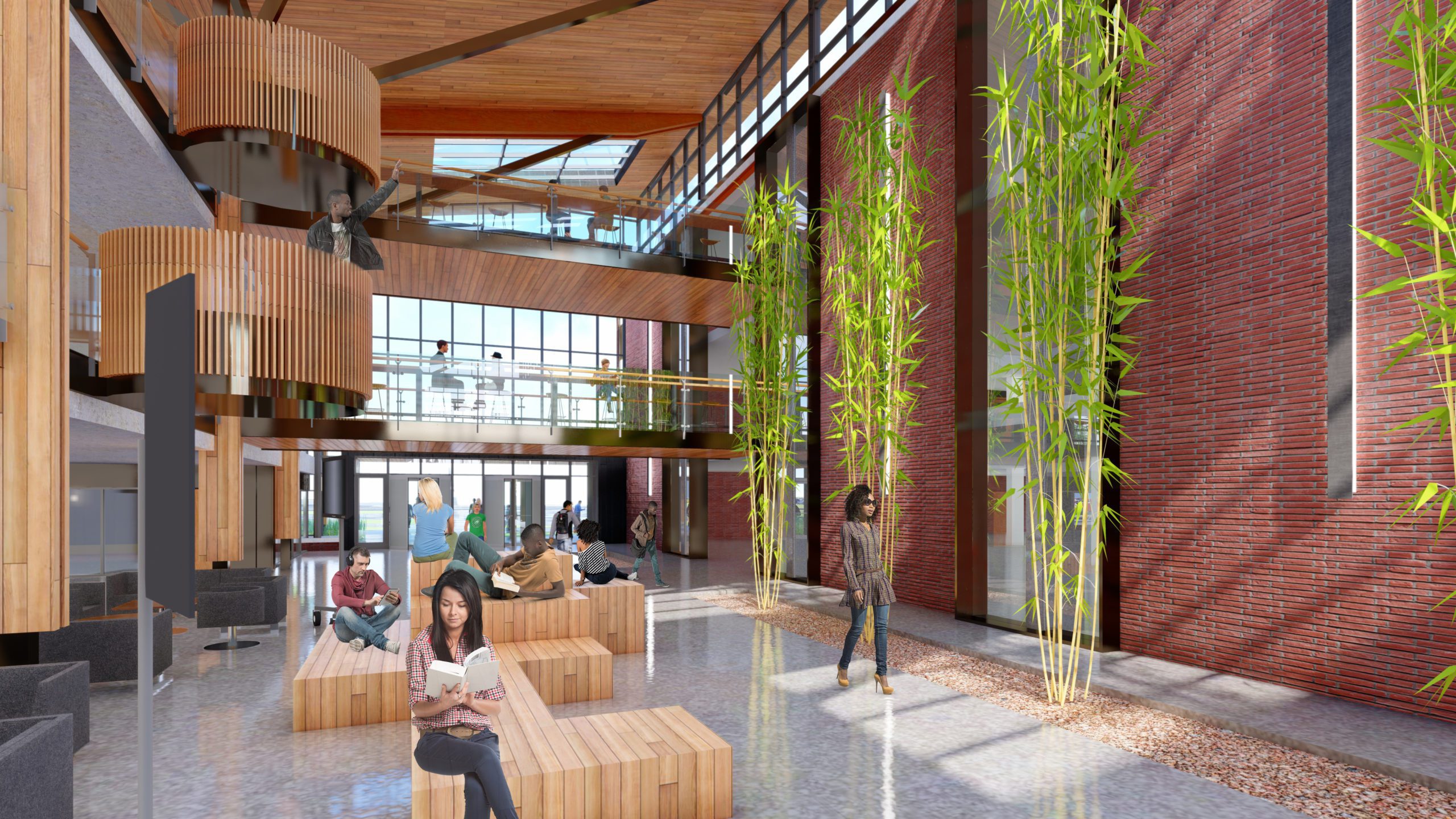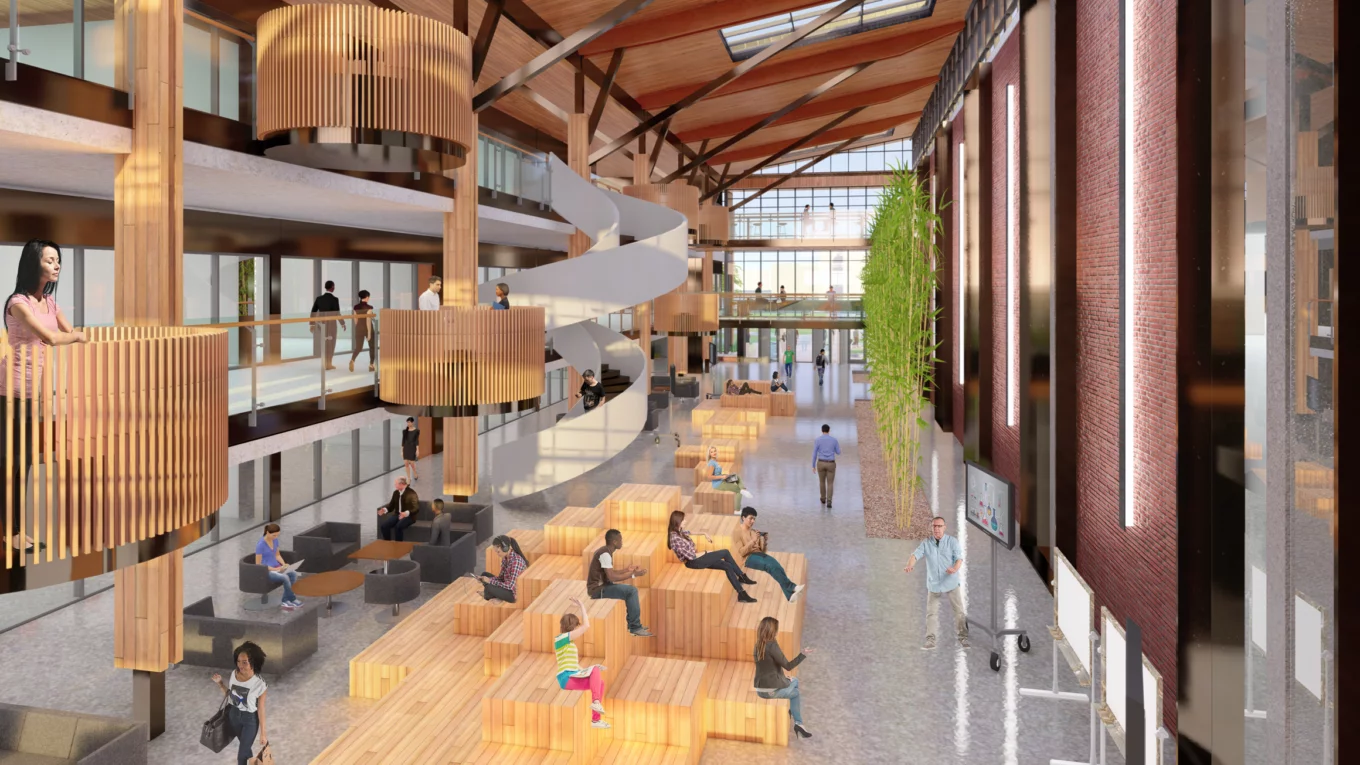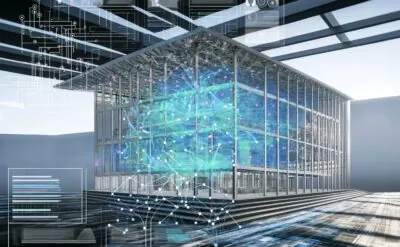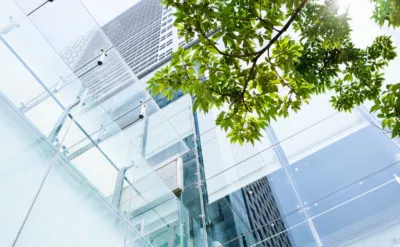Academic institutions around the world have implemented measures to protect students, faculty and staff from the spread of COVID-19. While there will be lessons learned in the months ahead, Architects, Interior Designers and Engineers are taking a holistic view towards making the built environment safe and healthy. Our integrated thinking considers the possible future airborne pathogens, coupled with realizing long term benefits of reducing the amount of sick days, depression and anxiety as the “indoor generation” starts entering our campuses. Here are specific design strategies that NORR considers in our education projects:
Indoor Air Quality
We rely on mechanical systems to deliver contaminate-free air to our indoor, sheltered and closed-off environment. Here are some aspects that should be considered when designing an indoor air quality system.
- Increase airflow from the outside and in turn, increasing air exchanges. This will dilute any pathogens present in our indoor environment
- Use UVC light in ductwork and possibly other systems like bipolar ionization and photocatalytic oxidation systems to trap or kill air born pathogens running through the system
- Upgrade to higher-rated filters. Most viruses are too small to be filtered by conventional filter systems
- Create zoned airflow pressure environments to better protect sitting groups from people passing by
- Allow systems to perform night flushing and quickly regenerate the air from an outside source
- Control relative humidity within the 40-60% range. Pathogens have a harder time surviving in higher humid areas, but still need to keep humidity levels below 60% to alleviate other potential problems
A Touchless Environment
There are numerous fixtures, access points and routines that require a faculty member or student to touch a surface that has been in contact with several people. If we can limit or even eliminate these devices and enable touchless interaction, we can reduce the transmission of viruses and germs from inadvertently traveling from person to person.
- Reduce the amount of door access Larger space to maneuver around people and objects
- Touchless fixtures in washrooms, automated fountains, elevators, and other devices that can be converted into hands-free to access or enable
- Biometric interfaces to enable personal secured access to floors, rooms and buildings
- Automatic door entries at main entrances
Indoor Biophilic Environments
Studies have shown that incorporating planting materials into an indoor space has shown to increase creativity and reduce absenteeism, with studies recording an 8% increase in productivity and a 13% increase in inhabitants’ well-being. Not only does it create a relaxing Zen-type atmosphere but can be used to naturally filter out toxins in an indoor setting.
- Increase plant gardens in indoor spaces, green walls and other planting opportunities
- Filter air through natural green media such as green walls
Daylighting
Introducing daylight into our interior spaces have numerous benefits for personal health. Most windows have layers to help filter out UV light, but daylight itself has benefits for our immune system and creates well-lit comfortable indoor spaces.
- Increase glass facades around perimeter of buildings
- Introduce skylights, or solar daylight devices for internalized spaces
- Openings in floors to connect spaces without access to daylight

Embrace Technology
We have moved to virtual platforms in greater numbers and in a very short time frame. We need to look at mixing this virtual world with our in-person world. The benefits of technology usage in remote learning and teaching can increase the interactions between students attending class with students in remote locations.
- The virtual classroom environment for remote participation by students or teachers
- Create classrooms and break-out spaces that can work in a face-to-face or virtually-blended mode
- Multiple access points and viewpoints in classrooms that can be interactively shared between students and teachers
- Increase entire campus wireless internet access capabilities, indoors and out
- Champion the use of personal devices
- Use existing platforms
- Transition the campus culture and community to a virtual environment
The Outdoor Living Space
The use of sheltered outdoor learning spaces can be utilized as an alternate work environment or teaching space. If we design them to be sheltered from the elements, providing covered areas with thermally-heated slabs, we can elongate the usability of these spaces through the seasons.
- Allow for naturally filtered air
- Exposure to daylight and UVC light
- Provide writable interactive surfaces
- Seated areas, campfire arrangement or even typical breakout seating configurations
- Reduce the strain on indoor facilities
- Creates impromptu meetings and encounters
Being Flexible
Academic institutions will operate differently in this new reality and it will take some time to adjust the beta model to new standards of indoor spaces. The reality of moving to a flexible model, and thus the ability for learning spaces to adjust to ever-changing learning and social interaction models, is a must.
- Classrooms should be flex and incorporate moveable furniture
- Subdividing rooms with moveable or swing partitions
- Multipurpose workshops and laboratories with moveable worktops and storage
- Flexible break-out spaces or collisions areas. This allows larger areas to maneuver around and create impromptu meeting areas
- Flexible break out spaces that can connect or open to one another
- Rooms that can open into hallways, creating larger interactive spaces
Small changes can ultimately have long-lasting dramatic impacts. Applying even some of these measures can increase productivity, create a healthier more energetic learning environment where students, faculty and staff can participate in their daily interactions. As Architects, Interior Designers and Engineers, we take a holistic view of design strategies in creating the campus-built environment for best learning outcomes.



